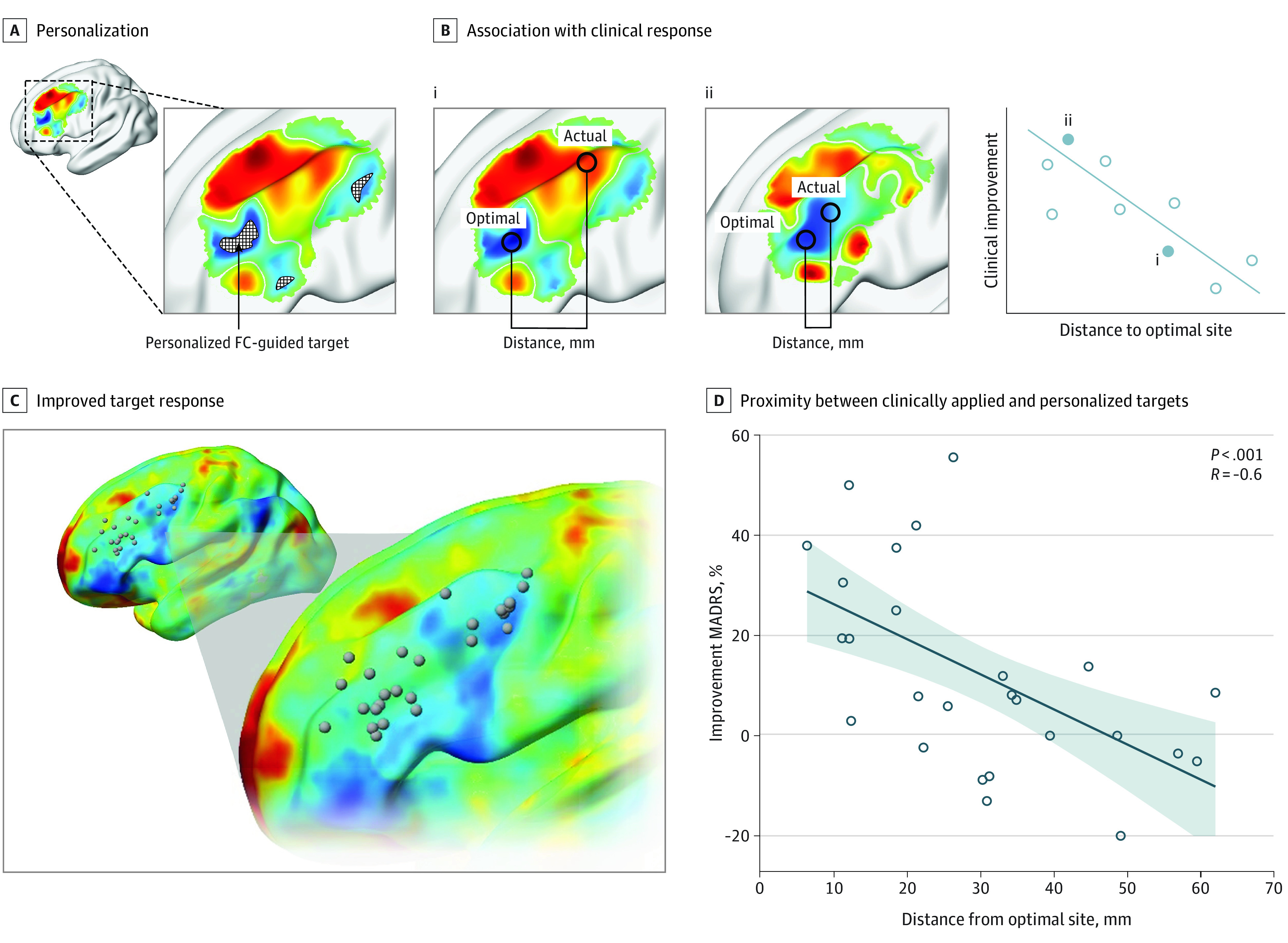Figure. Closer Proximity to Personalized Stimulation Targets Associated With Improved Response to Repetitive Transcranial Magnetic Stimulation Treatment for Depression.

A, Personalized stimulation targets were computed retrospectively for 26 individuals who previously received left-sided repetitive transcranial magnetic stimulation treatment for 3 weeks based on the F3 beam targeting method. Functional connectivity (FC) was computed between the subgenual cingulate cortex and each vertex comprising the dorsolateral prefrontal cortex using each individual’s own resting-state functional magnetic resonance imaging scan. Vertices most anticorrelated with the subgenual cingulate cortex were spatially clustered, and the center of the largest cluster was defined as the personalized target coordinate. Change in depression symptoms at 3 weeks was assessed compared with baseline using the Montgomery-Asberg Depression Rating Scale (MADRS). B, We anticipated that closer proximity between clinically applied and functional magnetic resonance imaging–personalized targets would lead to improved treatment response. This is a cartoon example only. C, Personalized stimulation targets (gray spheres) varied considerably across the spatial extent of the dorsolateral prefrontal cortex. D, Closer proximity between clinically applied and personalized targets associated with better clinical response.
